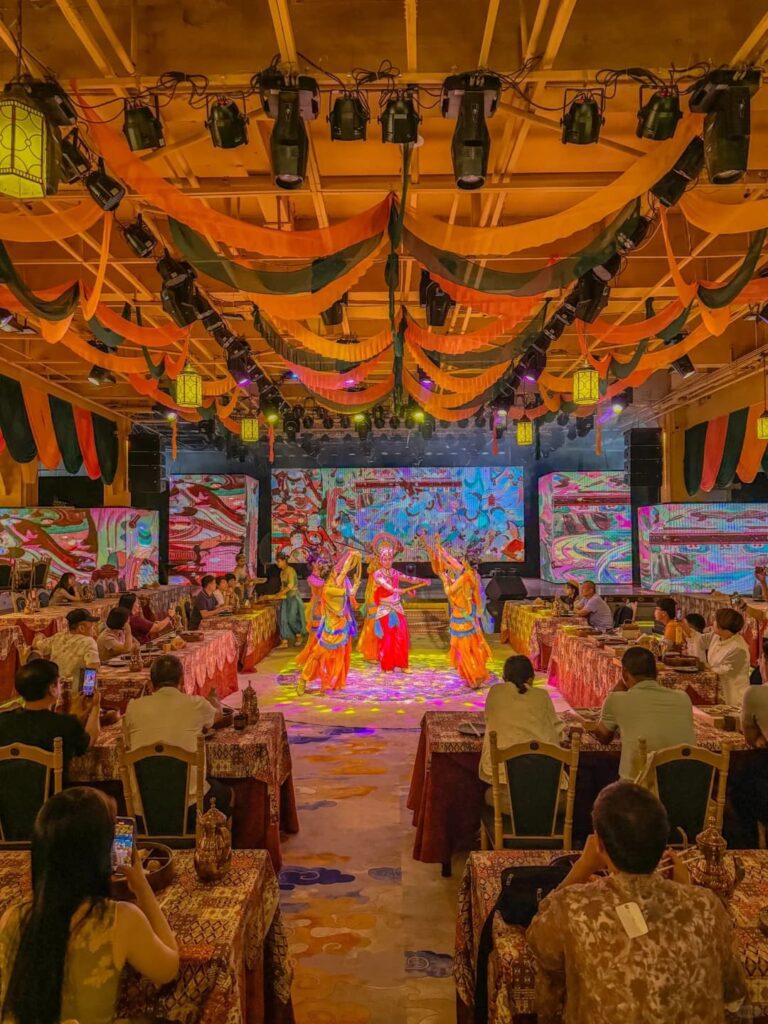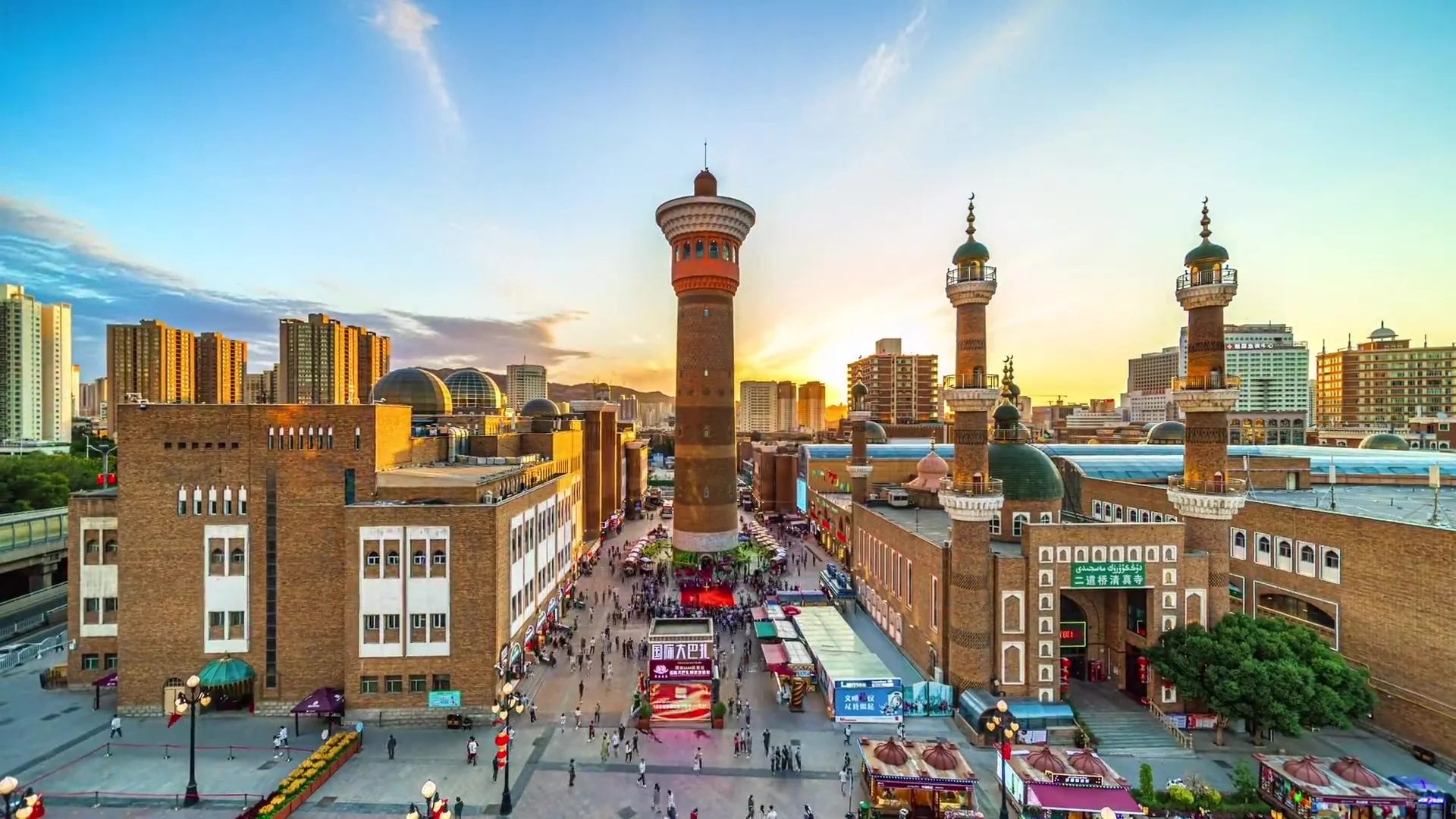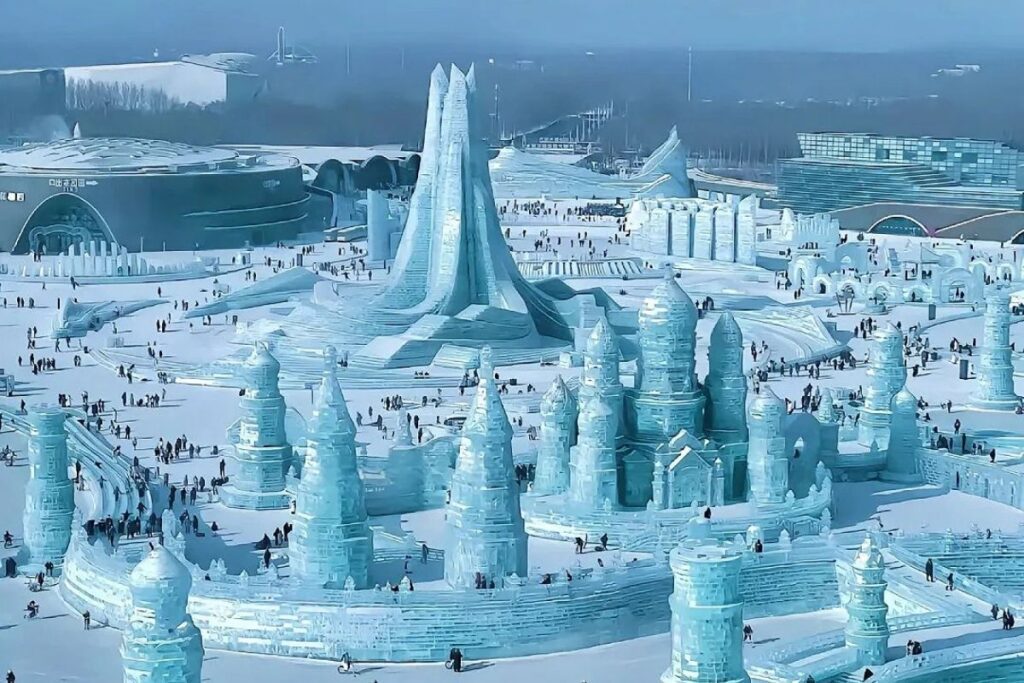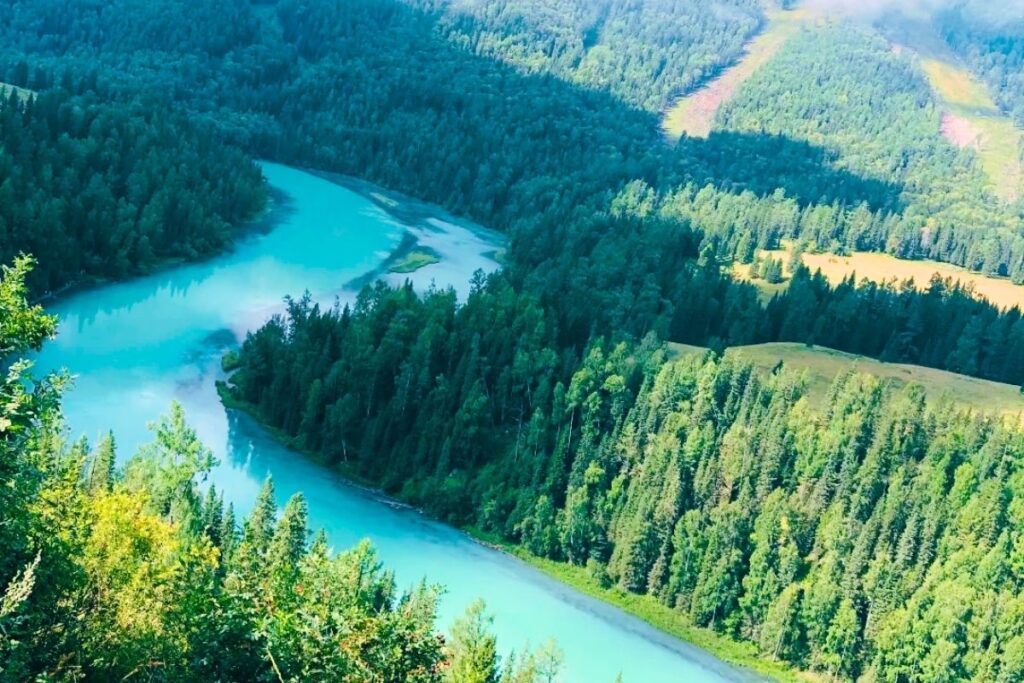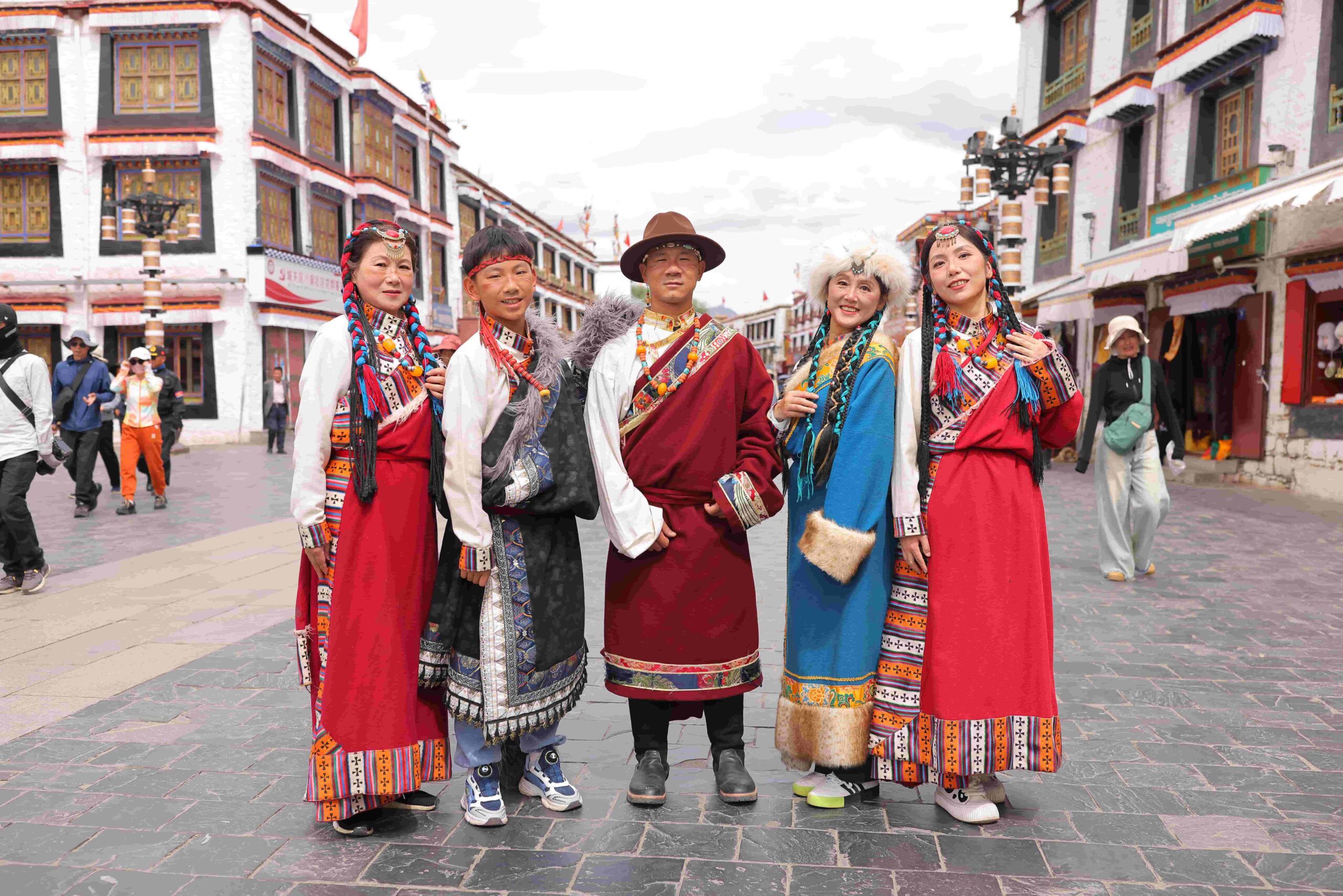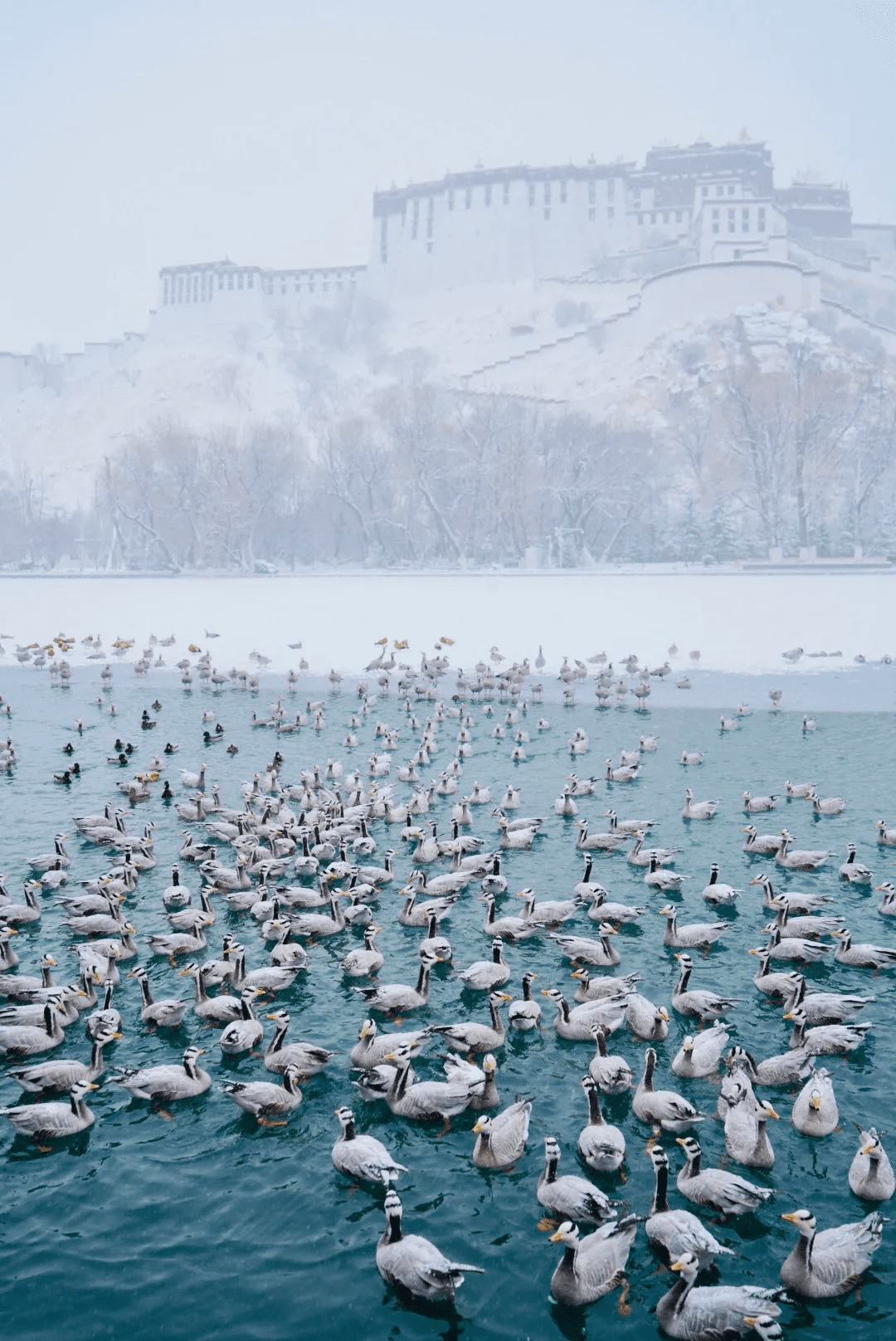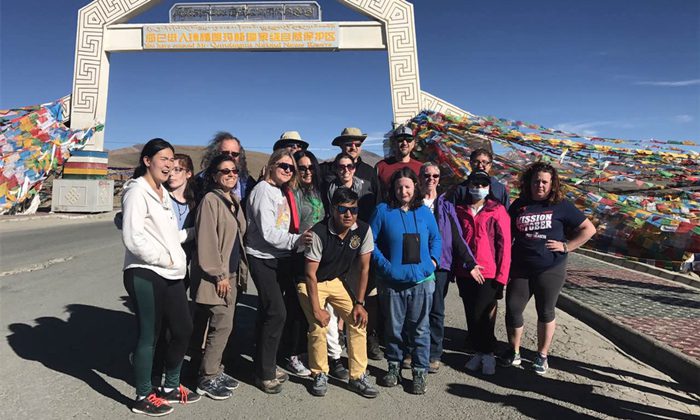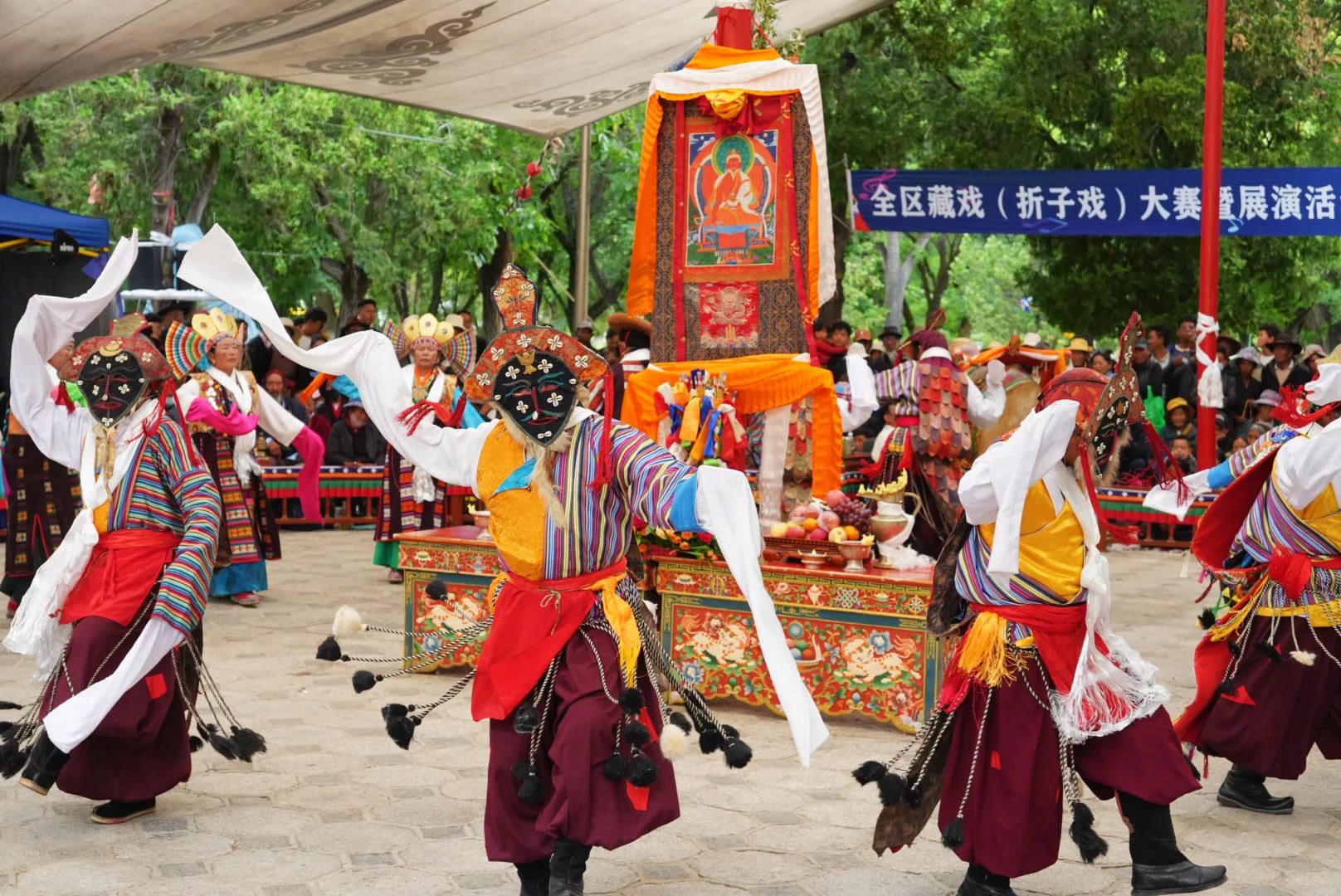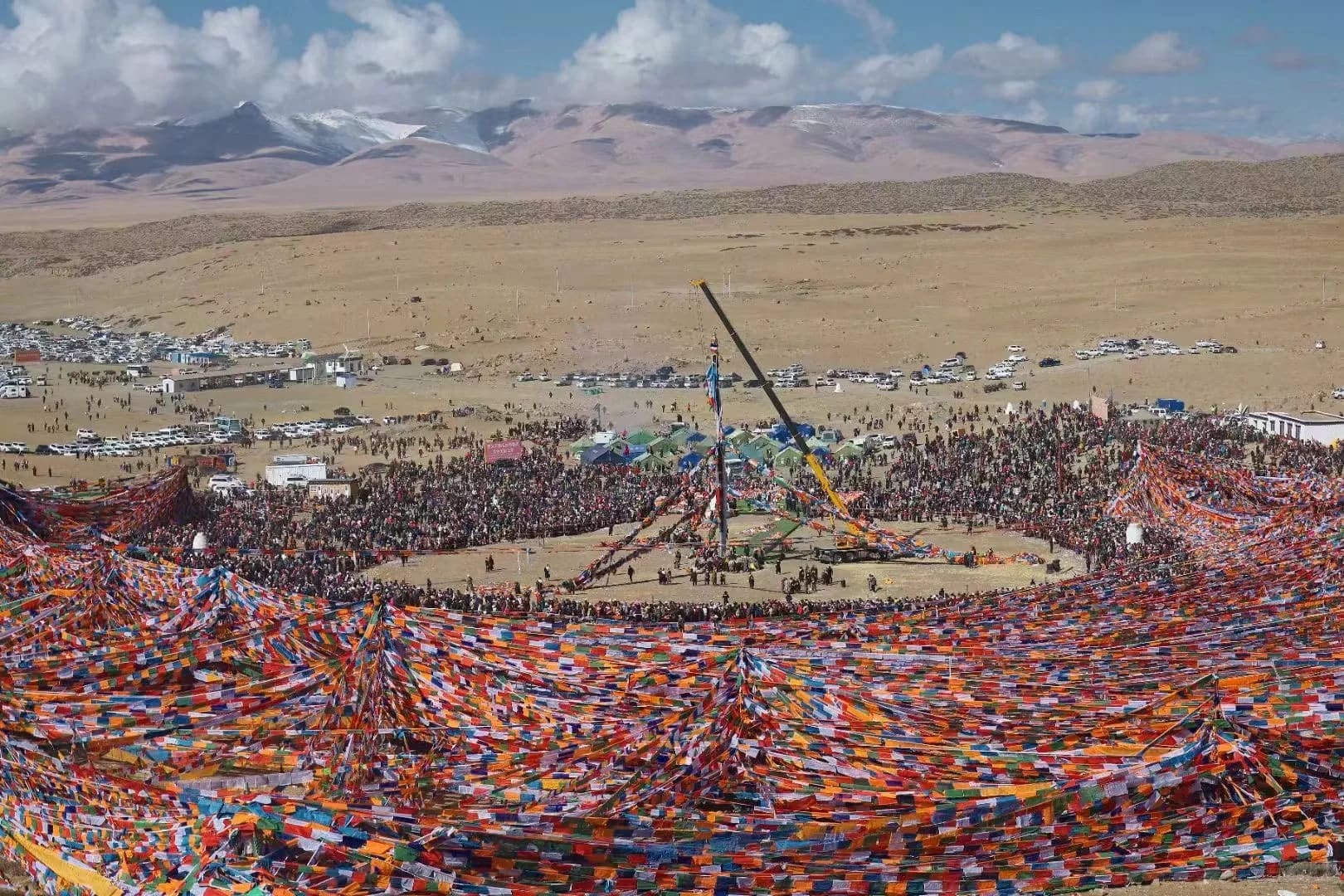You want to travel to Xinjiang, but you often hear people say, "Let's go to the northern part of the country this time" or "Let's go to the southern part of the country next time".
What is the difference between "Northern Territory" and "Xinjiang"? What are the differences in landscape, culture and climate between the two?
We'll take you through the geographic divisions, cultural features and travel tips of Xinjiang vs North Xinjiang vs South Xinjiang, and help you find the most suitable route for you in Xinjiang!
What is the relationship between Xinjiang and the northern border?
Xinjiang is a whole region. The northern border is only part of it.
The full name of "Xinjiang" is Xinjiang Uygur Autonomous Region(math.) genus
It is one of the five ethnic minority autonomous regions in China, and is located in the northwest of the country, making it the largest provincial administrative region in China in terms of area.
The term "Northern Territory" refers to the area north of the Tien Shan mountain range in the interior of Xinjiang.
In other words, the Northern Territory is part of Xinjiang, just as "Northern Taiwan" is part of all of Taiwan.
The Tianshan Mountain Range runs through the center of the country and naturally divides Xinjiang into two regions: the "South" and the "North".
So:
- Northern border = north of the Tianshan Mountains(Ili, Altay, Urumqi, etc.)
- South Xinjiang = south of the Tian Shan Mountains(Kashgar, Hotan, Aksu, Korla, etc.)
The topography of Xinjiang shows a pattern of "three mountains and two basins".
- Altai MountainThe city is located in the northernmost part of Xinjiang, bordering Russia and Mongolia, and is densely populated by glaciers and forests.
- Tianshan Mountain RangeIt runs through the center of Xinjiang and is the "backbone" of the country, as well as the boundary between the north and south of Xinjiang.
- Kunlun Mountain Range: Located in the southernmost part of the country, bordering the Tibetan Plateau, it is one of the longest mountain systems in China.
- Tsungaria or Jungarian depression in north Xinjiang between Altai and Tianshan(North): Located north of the Tianshan Mountains, the climate is humid and the grasslands are rich.
- Tarim Basin depression in southern Xinjiang(South): Located south of the Tianshan Mountains, this is the largest inland basin in China, centered on the Taklamakan Desert.
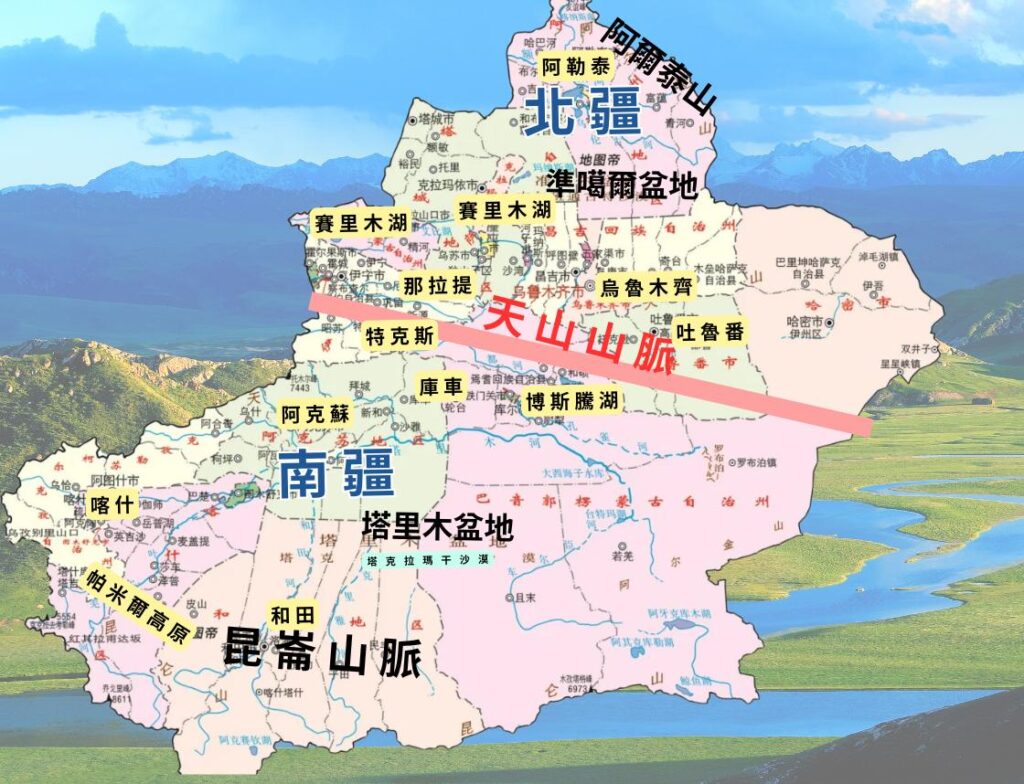
What's the difference between Xinjiang and Northern Xinjiang? A complete comparative analysis of North Xinjiang vs South Xinjiang
Xinjiang covers a vast area, accounting for one-sixth of China's land mass, and many people who plan their first trip to Xinjiang often confuse the terms "Xinjiang" and "Northern Xinjiang".
As seen from the above article, in factXinjiang is not equal to the Northern Territory, which is only a part of Xinjiang.
The geographic pattern of the whole of Xinjiang can be roughly divided into two regions, the "Northern Territory" and the "Southern Territory", with the Tianshan Mountain Range as the boundary.
There are significant differences between these two regions in terms of topography, climate, landscape and people.
From a tourism point of view, the northern border is famous for its magnificent natural scenery, while the southern border has a strong historical background and Silk Road culture as its core.
If you're planning your trip and wondering where to start exploring Xinjiang.
The table below will show you how to get the best out of the Geographic location, climatic characteristics, landscape features, cultural atmosphere and tourism themes etc. oriented.
To help you quickly understand the differences between the North and South Borders, as a reference for your travel choices.
| classification | North of Xinjiang | South Xinjiang |
|---|---|---|
| geographic location | North of the Tianshan Mountains (Ili, Altay, Urumqi, Lake Salimu) | South of the Tien Shan mountain range (Kashgar, Hotan, Aksu, Palmyra Plateau) |
| Climatic Characteristics | Cool and humid with four distinct seasons | Dry and hot with little rainfall |
| Scenic Features | Lakes, snow-capped mountains, grasslands | Deserts, ancient cities, oases |
| Cultural Atmosphere | Multi-ethnic integration (Kazakh, Mongolian, Han, Uighur) | Uyghur culture is strong, but there are also Tajiks and Kyrgyz, Islamic style. |
| Travel Themes | With the natural scenery as the main focus, you can enjoy the magnificent beauty of snow-capped mountains, lakes, grasslands and the Gobi Desert. It is a paradise for photography, camping and summer vacation. | Focusing on history and humanities, visit ancient cities, mosques and poplar forests along the Silk Road. Cross the Taklamakan Desert and experience the vastness and romance of the Western Frontier. |
| Suitable Groups | Newcomers to Xinjiang | Deep Culture Explorer |
See the scenery in the north of the border, and see the scenery in the south of the border.
The northern border is like poetry, the southern border is like history.
Northern Xinjiang is famous for its magnificent natural landscape, with snow-capped mountains, lakes and grasslands forming the most classic impression of Xinjiang. At the same time, it has also nurtured a rich nomadic culture.Traditional Life and Pastoral Spirit of the KazakhsThe North Border is not only a landscape, but also a rhythm of life. Let the northern border is not just a landscape, but also a rhythm of life.
The southern border is famous for its rich cultural heritage and historical stories. The streets, bazaars and mosques of the ancient city of Kashgar are rich in Uyghur flavor. But it's not just about the people.Pamir Plateau, Taklamakan DesertThese places are also blessed with spectacular natural scenery.
In short, Xinjiang is like a book:The northern border is a poem written to nature, while the southern border is a history carved into time.
Traveling in the North: the first choice for natural scenery and convenient journey
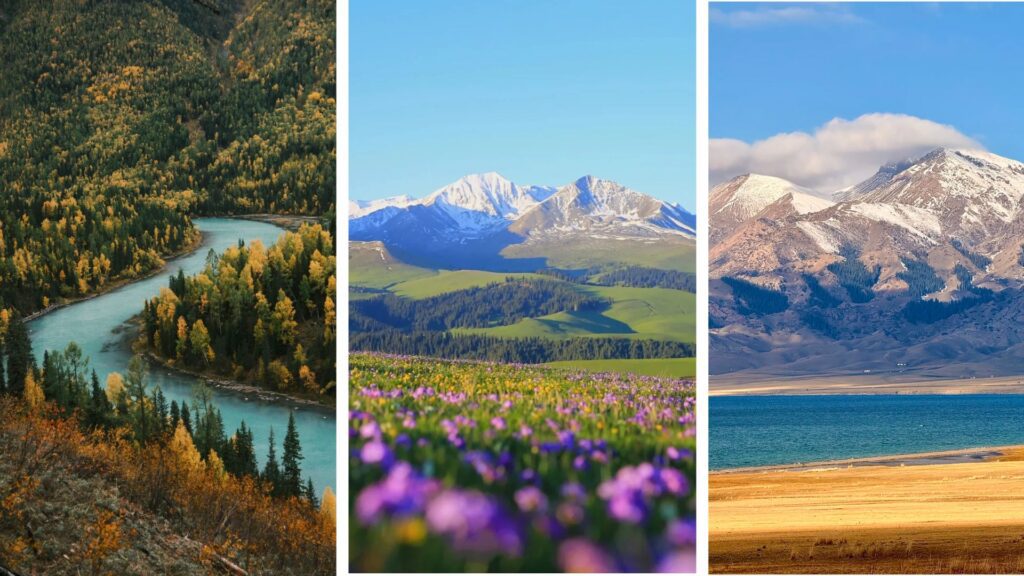
Northern Xinjiang is the first stop for many travelers visiting the region.
The reason is simple:The climate is pleasant, the transportation is convenient, and the distance between attractions is relatively close, which makes the itinerary more relaxed..
The overall tourism facilities are sound, and the supporting facilities such as accommodation, catering and toilets are more in line with the needs of general travelers.
It is especially suitable for those who come to Xinjiang for the first time, or those who rarely travel to remote areas (outside the first and second tier cities in China).
From blue lakes, golden grasslands to snowy peaks, every road and corner here is like a painting.
Representative Areas and Attractions
- Altai region:Kanas Scenic Area (three bays: Shenxian Bay, Moon Bay and Wolong Bay), Wo Mu Village and Coco Tohai are recommended in all seasons, and the largest powder snow skiing area in winter is in Wo Mu Village!
- Ili region:Narathi Grassland, Sailimu Lake, Zhaosu Sea of Flowers, Tangbra Prairie, the grasslands here change from season to season like a picture, the most famous Sailimu Lake is a must-visit scenic spot in the northern border.
- Around Urumqi:Tianshan Tianchi and Dushanzi Grand Canyon, where you can see the snowy peaks as well as the canyon landscape.
- Featured Highway:The northern section of the Dokou Highway (Dushanzi-Nalati) is recognized as one of the most beautiful self-driving highways in China.
- The landforms are spectacular:Both Urho Devil City and Buerjin Colorful Beach are famous for their wind-eroded Yardang terrain. Devil's Town is famous for its magnificent and desolate rock formations and strong wind erosion lines, which show the primitive power of the earth; while the Colorful Beach is a fantastic scene with red, yellow and purple rock formations stacked up along the river, with changing colors at sunset, making it a must-visit place for photography enthusiasts.
If the northern border is a poem of nature, then the southern border is a scroll of history.
Here it is.Important Hub on the Ancient Silk RoadThe city has a rich cultural heritage and a wide variety of ethnic customs.
Southern Xinjiang is characterized by high terrain and dry climate, with deserts, oases and plateaus intertwining to create a vast and spectacular Western landscape.
At the same time, it retains the most original Uyghur culture and traditional way of life.

Tourism in South Xinjiang: Humanistic Appreciation and the Heart of the Silk Road Ancient Kingdom
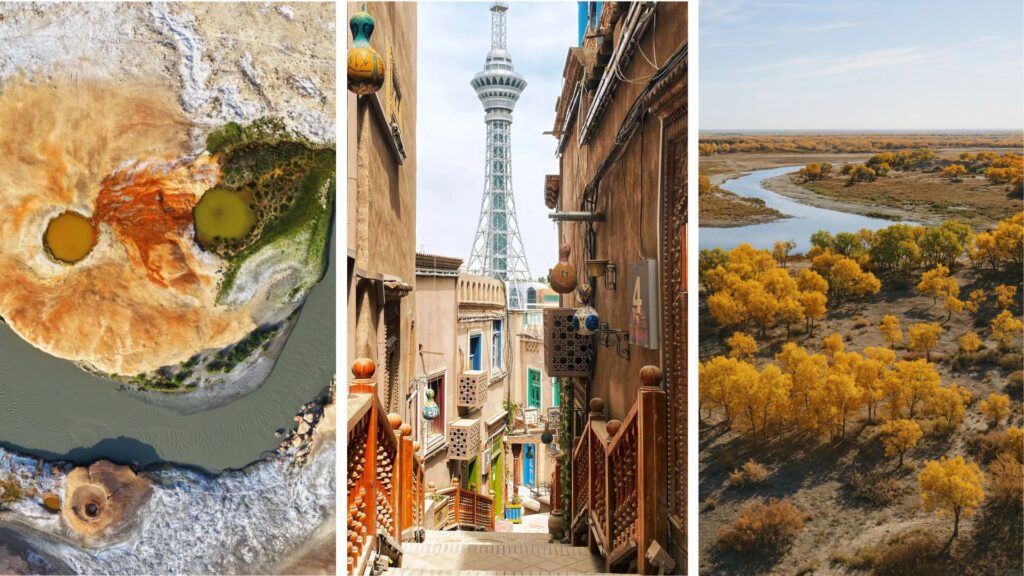
South Xinjiang is the place where the soul of Xinjiang is deepened.
It's a fusion ofHistory, humanities and natural beauty, the legacy of the ancient Silk Road.The land is intertwined with the ruins, the cultural traditions of the Uyghurs, and the magnificent snowy peaks of the Pamir Plateau (the plateau nation of the Tajiks).
Compared to the convenience and modernity of the northern frontier, theThe rhythms of Southland are slower, more primitive, and more authentic.
During the trip, you will meet warm locals, winding old streets, markets and handicrafts, and experience a different flavor of life from the city.
Although the transportation distance is long and the facilities are relatively simple, the unique cultural depth and human warmth of the southern border is often unforgettable.
Every ancient city, every bazaar and every journey is like a time-traveling journey to the Western Regions.
Representative Areas and Attractions
- Kashgar region:The ancient city of Kashgar, the Etigarh Mosque, the Tomb of the Fragrant Princess, and the Old City Bazaar are the most representative core of Uyghur humanity, and Kashgar at night is full of exotic atmosphere.
- Tashkent:Pamir Plateau, Stone Town, Golden Grass Beach, Lake Khar and the high-altitudeBaisha Lake.Moustagh Peak ParkThe lake is the most powerful natural landscape in Xinjiang. The lake and the snow-capped mountains are reflected in a painting, and the blue and white color intertwine to create the ultimate pure beauty, which is a paradise for photographers and explorers.
- Aksu area:The mysterious Grand Canyon of Tianshan Mountain and the Grand Canyon of Wensu are famous for their red sandstone landscapes, and the canyons are magnificent with thousands of towering walls.
- Wada area:The edge of the Taklamakan Desert, the ruins of the Niya, the night market and the jade culture show the prosperous legacy of the ancient Silk Road.
- Featured Highway:S101 Taklamakan Desert Highway(Korla-Minfeng) runs straight through the desert hinterland, with poplar forests and golden sand dunes intertwined on both sides, which is the most beautiful adventure route to experience the vastness and solitude of the Western Region.
South of the border, is the epic of the precipitation of the years.
From the alleyways of the ancient city of Kashgar, to the clouds of the Pamir Plateau, to the reflections of Baisha Lake and Moustagh Peak, every step here is a journey through the millennia.
Wind and sand have sculpted the city, culture has nourished the soul, and the story of Xinjiang continues here.
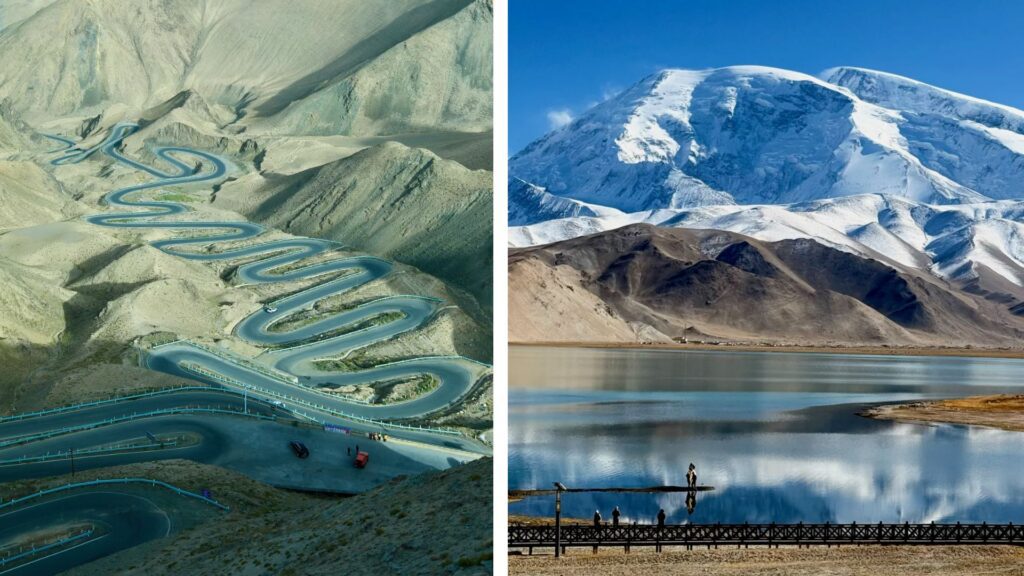
V. Traveling in the Eastern Frontier: The Mixture of Flame and Sweetness

In fact, in addition to the North and South Borders, a more detailed description would include the East Border (which is also known as the Silk Road in the early days).
The main tourist centers of Eastern Xinjiang are Turpan, Hami and Urumqi.
The climate here is hot and the sun is strong, but it is this flame of passion that nurtures the sweetest fruits and the richest culture of Xinjiang.
If the northern border is magnificent and the southern border is heavy, the eastern border is a symphony of heat and sweetness.
From the scorching heat of the Flaming Mountain to the fragrance of the grapevine, the sweetest flavor of Xinjiang is brewed here with the purest sunlight.
Representative Areas and Attractions
- Tulufan region:The Flaming Mountains, Kanyi Well, and Grape Gully are the most representative scenic spots in Eastern Xinjiang; the temperature reaches over 40°C in summer, but there is a coolness under the shade of the grape vines.
- Hami area:Known as the "Land of Fruits and Melons", the cantaloupe produced in August is the sweetest and most fragrant, and there are also the Barkun Grassland and the Devil's Castle.
- Urumqi region:The Xinjiang International Bazaar and Museum is the best place to experience the city's culture and ethnic integration.

The Eastern Frontier is the embodiment of heat and sweetness.
The sun is hot, the fruit is sweet, and the people are warm and cheerful.
Between the heat of the Flame Mountain and the fragrance of the grapevine, you can feel the most authentic Xinjiang style.
Transportation in Xinjiang: Introduction to Important Airports and Train Stations
Xinjiang is a vast region with long distances between cities. To move in and out of the region, we mainly rely on airplanes and railroads. Below is a compilation of the most important hubs by region, with highlights of the key attractions that are suitable for connecting to them, so that you can quickly align yourself with them when arranging your trip.
1Airline Hub (maximum flights)
- Urumqi Dilworth International Airport (URC)
The largest hub in Xinjiang, where most foreign flights transfer. It is connected to major cities in Northern Xinjiang (Yili, Altay), Southern Xinjiang (Kashgar, Hotan, Aksu) and Eastern Xinjiang (Turpan, Hami).
2. Key airports in the North
- Altai Airport (AAT): The closest air gates to the Kanas, WoMu, and CocoTokai; winter access to Tseung Kwan O ski area.
- Yining Airport (YIN): First choice for access to the Ili Valley, Nalati, Zhaosu, Tangbra grasslands and Lake Salimu.
- KARAMAYI AIRPORT (KRY): Easy access to Urho Devil City and the surrounding Yardang landforms.
- Budzin Kanas Airport (KJI): Service Kanas/Harvest (mostly high season/seasonal flights).
3. Southern Border Key Airports
- Kashgar Airport (KHG): The core gateway to the ancient city of Kashgar and the gateway to the Tashkent (Pamir Plateau, Stone Town, White Sand Lake and Moustagh Peak).
- Hotan Airport (HTN): downtown Hotan, jade culture, southern edge of the Taklamakan Desert.
- Aksu Airport (AKU): Connecting with the Kucha, Tien Shan Mystery Canyon and Wensu Grand Canyon.
- Kurla Airport (KRL): Gateway to Baja California, leading to the northern end of the S101 Taklamakan Desert Highway.
4. Eastern Frontier Key Airports
- Tulufan Jiahe Airport (TLQ)The Flaming Mountains, Kanyi Well, and the Grape Gulch.
- Hami Airport (HMI): Hami city center, Barkun Grassland, Devil's City, etc.
5. Major Train Stations (including High Speed Rail)
High-speed Rail / Animal Train (Lanzhou-Singapore High-speed Rail)
- Urumqi Station: Railway Hub of Xinjiang.
- Turpan North Station: Close to the Flaming Mountains, Kanyi and Grapevine, suitable for one-day/two-day routes in Eastern Xinjiang.
- Hami station (in Xinjiang): Leads to Hami, Barkun Grassland and so on.
Northern Territory Railway (ordinary trunk line + branch line)
- Directions: Urumqi → Kuitun → Yining (in the direction of Horgos); AlternativelyQuebec Linelead toAltay Station.
- Tourist counterparts: Ili Valley, Nalati, Zhaosu; Altay direction can be connected to Kanas/Holmud (depending on the season and road conditions).
South Xinjiang Railway (general-purpose trunk line + Ghanta closed loop)
- Directions: Urumqi → Korla → Aksu → Kashi → Tianhe.
- **He Ruo Railway (Hotan - Ruoqiang)** after the completion of the railroad, and the South Xinjiang Railway to form the "Giant Tower Railway" closed loop, the main cities in the southern Xinjiang can basically be reached by direct railroad (convenient for long-distance movement and night sleeper to save time).
6、Practical matching suggestions
- First time in XinjiangRecommended to fly to Urumqi in the north and Kashgar Airport in the south (mainly because there are more flights, but Hong Kong, Macao, Taiwan and Malaysia-Singapore flights are more often to change planes).
- East Frontier ShortThe most time-saving way to reach Tulufan North is by high-speed rail; if you want to connect to Hami, you can do so by automobile.
- Peak Season Airfares/TicketsJune-October: Early booking is recommended; airfares are rising every day.
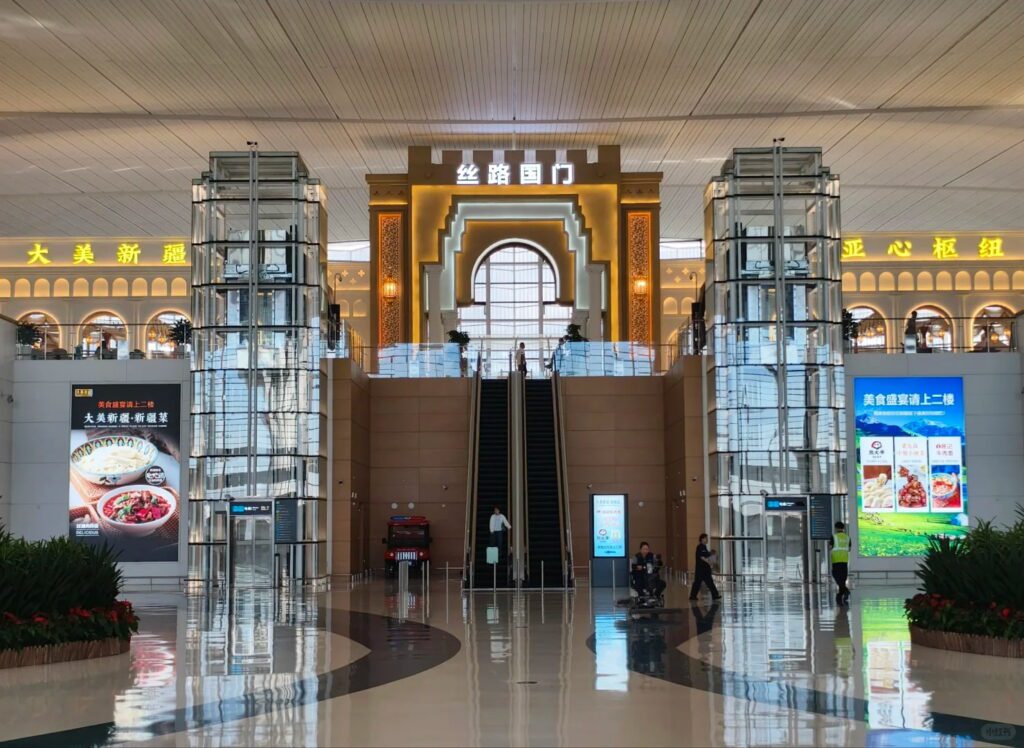
Suggested Monthly Comparison Table for Xinjiang Tourism
| months | Recommended Activities in Northern Territory | Recommended Activities |
|---|---|---|
| March-April | Ili Apricot Blossom, Tianshan Red Blossom | Almond Blossoms in Tower County, Spring Colors in Palmyra |
| May-June | Grassland Flower Season, Lake Salimu | Early Summer in Turpan |
| July-August | Cool Summer Vacation, Dokugo Highway | Fruits and melons in the air |
| September-October | Kanas Golden Autumn, Harvest Village | Poplar Forest and Ancient City Visit |
| November-February | Ski Ice Season | Off-season, less crowded and beautiful |
Time in Xinjiang seems to be slower than elsewhere.
Spring flowers, summer pasture, autumn gold, winter snow, each season has its own color and story.
No matter which month you set out, you can always find a path that belongs to you - either to see the scenery in the north, or to seek the scenery in the south, or to feel the heat and sweetness in the east.
Traveling in Xinjiang, meeting the world
People who have been to Xinjiang say it's not like a place, it's more like a shrunken world.
From the snowy peaks of Pamir to the Flaming Mountains of Turpan, from the grasslands of Ili to the ancient city of Kashgar.
This vast land is a blend ofUyghur, Kazakh, Tajik, Kyrgyz, Mongolian, Russian and many other ethnic groups.
The intertwining of languages, the flow of music and the sincerity of the smiles constructed a colorful picture of Xinjiang.
Here you can hear the rhythm of Uyghur tambourine, the melody of Hassak Dombra, and the long tones of Mongols.
You can also see the bright eyes of Tajik girls, the Kirgiz herdsmen's work teams, and the yells of Han merchants in the bazaar.
The scent of spices, the rhythm of music, the colors of the sun, rolling in the wind.
It's like a world symphony without borders.
Xinjiang is not only rich in human diversity, but also in natural extremes.
The snowy mountains of the plateau, the golden waves of the desert, the green seas of the grasslands, the blue mirrors of the lakes, the
It makes for a fascinating geographical spectacle.
Some people say thatXinjiang is an addiction that makes you want to come back again and again.
Whether it's a journey across the North or South [Grand Circle Line].
Or walking quietly through the alleys of Kashgar's old town or stopping by the lake in Kanas.
Xinjiang always reminds people of the boundless sky and wind.
No matter how many times you've been here, Xinjiang can always surprise you again. Because every time you leave, it's like walking into a new world.
